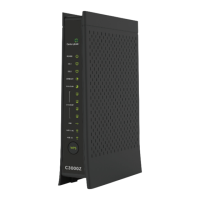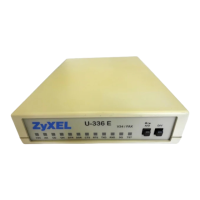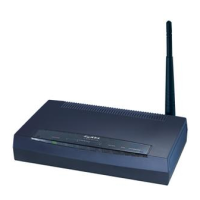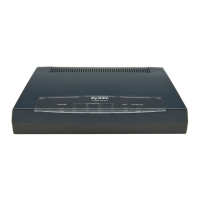eir F1000 Modem User’s Guide
Table 6 Network Setting > Broadband > Add New WAN Interface/Edit (Routing Mode) (continued)
Enter the gateway IP address provided by your ISP.
Routing Feature (This is available only when you select IPv4 Only or IPv6/IPv4 DualStack in the IPv6/
IPv4 Mode field.)
Select this option to activate NAT on this connection.
Internet Group Multicast Protocol (IGMP) is a network-layer protocol used to establish
membership in a Multicast group - it is not used to carry user data.
Select this option to have the Device act as an IGMP proxy on this connection. This allows
the Device to get subscribing information and maintain a joined member list for each
multicast group. It can reduce multicast traffic significantly.
Select this option to have the Device use the WAN interface of this connection as the system
default gateway.
DNS Server (This is available only when you select IPv4 Only or IPv6/IPv4 DualStack in the IPv6/IPv4
Mode field.)
Select Dynamic if you want the Device use the DNS server addresses assigned by your ISP.
Select Static if you want the Device use the DNS server addresses you configure manually.
Enter the first DNS server address assigned by the ISP.
Enter the second DNS server address assigned by the ISP.
Select Factory Default to use the factory assigned default MAC address.
Clone the
computer’s
MAC
address - IP
Address
Select this option and enter the IP address of the computer on the LAN whose MAC you are
cloning. It is advisable to clone the MAC address from a computer on your LAN even if your
ISP does not presently require MAC address authentication.
Select this option and enter the MAC address you want to use.
Tunnel (This is available only when you select IPv4 Only or IPv6 Only in the IPv6/IPv4 Mode field.)
The DS-Lite (Dual Stack Lite) fields display when you set the IPv6/IPv4 Mode field to IPv6 Only.
Enable Dual Stack Lite to let local computers use IPv4 through an ISP’s IPv6 network. See Dual Stack Lite on
page 44 for more information.
The 6RD (IPv6 rapid deployment) fields display when you set the IPv6/IPv4 Mode field to IPv4 Only. See
IPv6 Rapid Deployment on page 44 for more information.
This is available only when you select IPv6 Only in the IPv6/IPv4 Mode field. Select
Enable to let local computers use IPv4 through an ISP’s IPv6 network.
Specify the transition router’s IPv6 address.
This is available only when you select IPv4 Only in the IPv6/IPv4 Mode field. Select
Enable to tunnel IPv6 traffic from the local network through the ISP’s IPv4 network.
Select Static if you have the IPv4 address of the relay server, otherwise select DHCP to
have the Device detect it automatically through DHCP.
Enter the subnet mask number (1~32) for the IPv4 network.
6RD Border
Relay Server IP
When you set the 6RD Type to Static, specify the relay server’s IPv4 address in this field.
Enter an IPv6 prefix for tunneling IPv6 traffic to the ISP’s border relay router and connecting
to the native IPv6 Internet.

